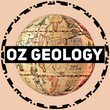Warrandyte Goldfield Prospecting Maps – Explore the Birthplace of Victoria’s Gold Rush
Step into one of Victoria’s most historic and scenic goldfields with the detailed Warrandyte Goldfield prospecting maps. Located just northeast of Melbourne, along the bends of the Yarra River, Warrandyte holds the distinction of being the site of Victoria’s first officially recorded gold discovery. Today, surrounded by crown land, state park areas, and accessible public river flats, Warrandyte offers a rare opportunity for modern fossickers to explore where the colony’s golden era first began.
🪙 Historical Overview: Warrandyte’s Historic First Strike
Gold was discovered at Anderson’s Creek in 1851, sparking Victoria’s first real gold rush, albeit on a small and local scale compared to what would soon follow at Ballarat and Bendigo. Early miners worked the gravels of the Yarra River and Anderson’s Creek, recovering fine alluvial gold from shallow wash layers. The Warrandyte district grew slowly at first but became an important gold producer through the 1850s and 1860s, especially after the discovery of quartz reefs along Fourth Hill and Whipstick Gully. Although the field never experienced the massive rushes seen elsewhere, Warrandyte’s steady yields of alluvial and reef gold made it a vital part of Victoria’s early mining story, and its rich legacy is still preserved in the hills, gullies, and rivers around the town.
✨ Notable Finds & Field Highlights
Warrandyte’s early diggings produced fine alluvial gold, with flakes and small nuggets recovered from the sandy banks and gravels of the Yarra River and Anderson’s Creek. Later, quartz reef mining at places like Fourth Hill and Whipstick Gully delivered rich specimen gold, with quartz veined with fine visible gold extracted from underground workings. The Fourth Hill area became the district’s major reef centre, with shafts, battery sites, and small-scale mines scattered across the ridges. Even today, careful fossickers can recover fine gold through panning in the creeks, and detectorists sometimes find small nuggets or specimen pieces on the slopes and gullies around Fourth Hill.
🥾 Ideal For
Warrandyte is ideal for panners seeking fine alluvial gold in the Yarra River and Anderson’s Creek gravels, especially after seasonal flooding. Detectorists can explore the dry slopes and gullies around Fourth Hill, where small nuggets and gold specimens still lie hidden among quartz fragments and old mullock heaps. The proximity to Melbourne, combined with the area’s rich history and beautiful river scenery, makes Warrandyte an ideal destination for families, beginners, and experienced fossickers alike who want a taste of Victoria’s gold rush heritage within an hour’s drive from the city.
⚠️ Fossicking Rules and Access Information
Fossicking for gold is allowed in certain public areas around Warrandyte with a valid Victorian Miner’s Right, but there are important restrictions. Much of the land around Anderson’s Creek and Fourth Hill falls within Warrandyte State Park, where fossicking is generally prohibited to protect environmental and historical values. Limited panning is permitted along certain stretches of the Yarra River Reserve under strict conditions. Always check access rules and restrictions using the GeoVic mapping tool before setting out, and follow all local park regulations when fossicking near Warrandyte. Always fossick carefully, respecting both the natural environment and the area's incredible historical significance.
Find Gold Where Victoria’s Golden Story First Began – With the Warrandyte Goldfield prospecting map, you can trace the paths of the very first diggers, pan the creeks where history was made, and discover real gold in the beautiful hills and valleys of Warrandyte.
Warrandyte gold map 1909:
https://viewer.slv.vic.gov.au/?entity=IE15489100&mode=browse
